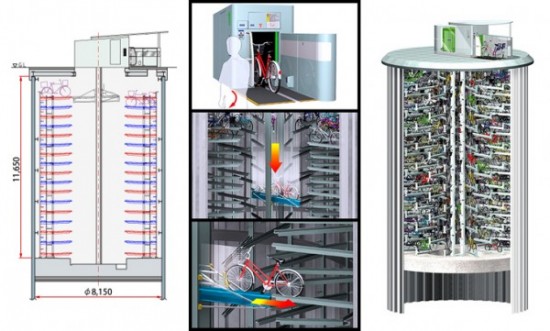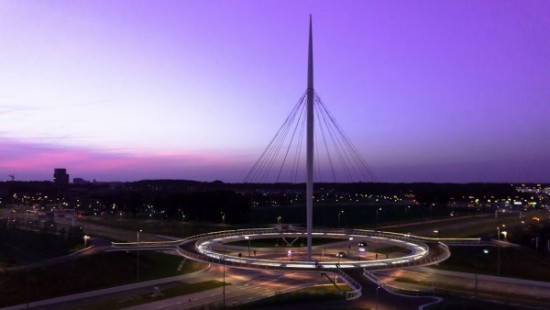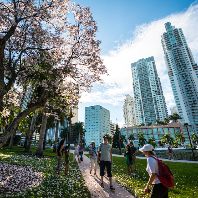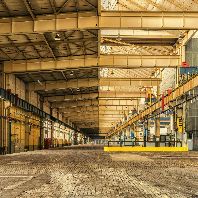MAB Bike Tower: 2014 The city of Utrecht has commissioned Dutch development company MAB to construct the world’s largest bicycle parking lot as part of the regeneration plan of Utrecht’s city center. The three-story tower will be able to accommodate 12,500 bicycles and will be situated right between the town center and the main train station, making it easy for commuters and shoppers alike to access.
 © MAB
© MAB
Trondheim Bicycle Lift: 2013 Many cities with an important cycling culture such as Amsterdam, Utrecht or Copenhagen are mainly flat, which facilitates moving around. However, Trondheim, the self proclaimed ''Bike Capital of Norway'', has some rather tall hills, making biking particularly tedious for the common biker. Therefore, in 1993 the first Tampede bicycle lift was constructed to help cyclists go up a 130 m long steep hill. The original lift was dismantled in 2012 before being replaced by a brand new one in 2013. The CycloCable, as it is now called, has been used more than 200,000 by the time it was replaced and 41% of bicycle users in Trondheim admitted that they used their bicycle more often because of the lift.
 © Trampe CycloCable
© Trampe CycloCable
Japan's Eco-cycle Underground Parking System: 2013 In many urban areas, land value is too expensive or too scarce to develop appropriate parking above ground. To avoid illegal parking in the streets, Giken Ltd. has come up with an innovative project to facilitate bike parking by storing them automatically underground in a 12 meter deep pit. The only structure which is built above the ground is the parking pod.
 © Giken Ltd
© Giken Ltd
Hovenring cyclist roundabout Eindhoven: 2013 In 2013, the city of Eindhoven opened the Hovenring roundabout, a 360 degree bike circuit hovering over the entrance to the A2 highway, one of the Netherlands’ busiest North-South speedways. Bicycles can slow down traffic considerably during rush hour, therefore, separating the 5,000 daily bikers and 25,000 cars on this busy roundabout was the best and safest solution. The flying saucer shaped elevated bridge is supported by 210 foot tall steel pylon and a set of cables, which give the illusion that it is hovering above the road.
 © ipv Delft
© ipv Delft
The Amsterdam Nesciobrug (2006) The Amsterdam Nescio Bridge, completed in the summer of 2006, is the longest cycling bridge in the Netherlands, spanning 163 meters over the Amsterdam Rhine Canal and 779 meters in total. Its massive size allows it to cross the river in a convenient easy slope for bikers. The Bridge, designed by Wilkison Eyre Architects, conveniently connects the new suburb of Ijburg to “mainland” Amsterdam.
 © Dea2CV
© Dea2CV
Even though bicycle infrastructure is not always at the top of the list when it comes down to urban generation projects in most major European cities, these projects are a good example of what can be achieved. They show that converting cities to alternative ways of transportation is possible and is increasingly becoming a necessity.














